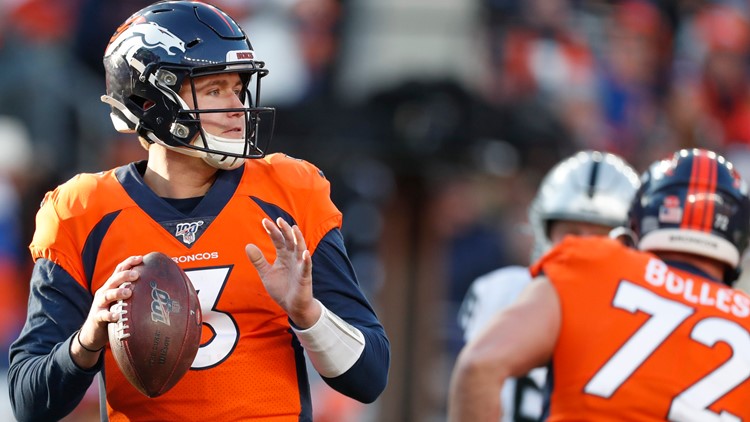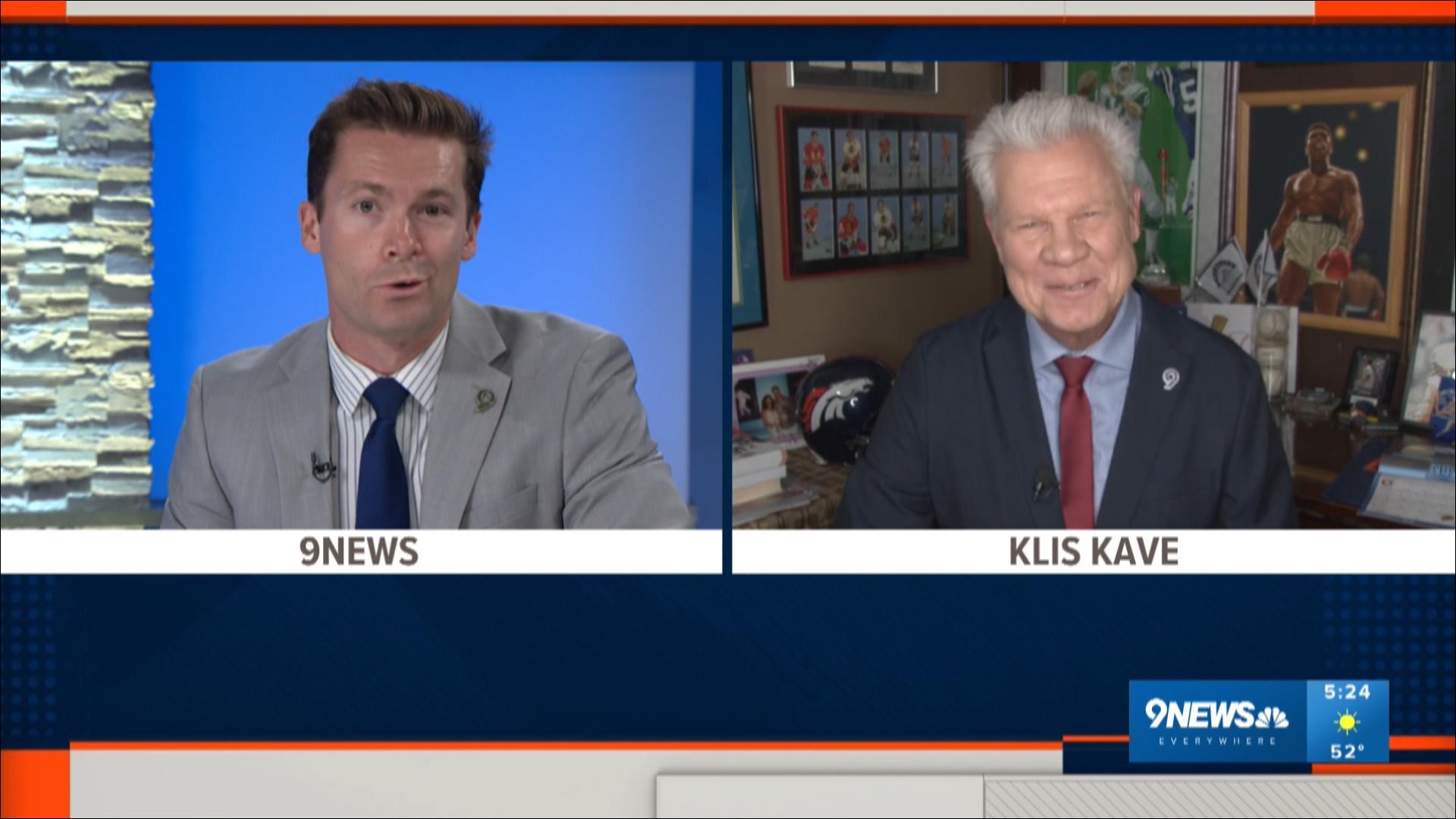We dedicate this Broncos mailbag to all the high school seniors who missed out on dancing at their prom, participating in their final spring sport and walking in their graduation ceremony.
And for college graduates, too, our thoughts are with you. You all got a bum deal from the worldwide shutdown, but may it make you more determined to impact the future.
On to the ‘bag:
Elway had another great draft!! The only thing I thought was questionable, 2nd round, KJ Hamler or OT Ezra Cleveland? (Garett) Bolles must have convinced (Mike) Munchak that he’s turned the corner. Thank you for the great job, stay healthy!!
--Todd Allerdings
Todd – Going into the draft, the Broncos loved Hamler for their No. 46 pick in the second round. He's got the difference-making speed that would concern defensive coordinators. I was a little surprised that after they selected receiver Jerry Jeudy in the first round, they didn’t take one of two cornerbacks, Jaylon Johnson or Trevon Diggs, in the second round.
I thought cornerback was a bigger need than offensive tackle because I think the Broncos had made their bed, so to speak, with Garett Bolles at left tackle and Ja’Wuan James at right tackle. And they are going to give Elijah Wilkinson a fair chance to beat out Bolles at left tackle during training camp.
Bolles is a former first-round draft pick the Broncos don’t want to give up on going into his fourth season after three consecutive 16-game starts. His fifth-year option was declined, but the team is still counting on him in Year 4.
And James, because you paid him $17 million for just three quarters of a game last year and are about to pay him another $10 million this year.
Here’s the deal on a cornerback: The Broncos liked Michael Ojemudia better than all the second-round corners as projected by the mocksters. The Broncos also knew they liked Ojemudia better than other teams, so they picked up Hamler in the second round and waited until their first of three third-round picks, No. 77 overall, to get the Hawkeye corner.
I still think the Broncos will add a veteran corner before the start of the season. For now, A.J. Bouye is one starting corner and Ojemudia will get a chance to start at the other. Bryce Callahan is tentatively slated to serve as the nickel corner after coming off a missed season with a foot injury.
Ezra Cleveland, by the way, is a prototype left tackle for the zone-blocking scheme, and sure enough Gary Kubiak and the Vikings took him at No. 58 in the second round.
Are you sure Al Davis didn’t come back and make that pick for Henry Ruggs? Classic Raider move. Speed guy and they kept Denver from getting him. Oh well, happy with Jeudy.
--Dennis DeJulio
Dennis – Bully for Raiders coach Jon Gruden and general manager Mike Mayock for their tip of the cap to the Raiders’ late owner. Al Davis didn’t take the best receiver; he took the fastest.
The Broncos liked Ruggs, but they weren’t going to take him. Their sights were on Jeudy and CeeDee Lamb, who were more productive receivers at their major college programs.
When the Jets with the No. 11 pick took offensive tackle Mekhi Becton – (a classic Adam Gase move, by the way, as he again took the offensive tackle coming off a marijuana episode. Four years earlier, as coach of the Dolphins, he nabbed bong-masked tackle Laremy Tunsil with the No. 13 overall pick) – and then the Raiders selected Ruggs at No. 12, the Broncos knew either Jeudy or Lamb would there at No. 15.
Turned out they both were, as another receiver-needy team, the 49ers, took defensive tackle Javon Kinlaw.
Jeudy was the best choice for the Broncos because his route-running skills make him more NFL-ready, and he also better complements Courtland Sutton, whose skill set is similar to that of Lamb.
Had Jeudy or Lamb not been there at No. 15, the Broncos would have traded back a few spots and taken inside linebacker Patrick Queen.
Well, Mike, all the talk is on Drew Lock. But what happens if he gets hurt? Are the Broncos really addressing the QB position well? Is Jeff Driskel the answer?
--Ed Stoeckel
Ed – Like all good executives, you worry about worst-case scenarios. Let’s start by saying every team is in trouble if they lose their starting quarterback to injury. If Tom Brady goes down, the Tampa Bay Bucs are sunk. If Aaron Rodgers suffers a season-ending injury, Jordan Love will not be ready to rescue.
That said, Lock has to get a better feel for self-preservation. He took one or two full-body shots while scrambling last year.
As for Driskel, the Broncos like his ability to take off and make something happen if his first or second read isn’t there. John Elway wants mobile quarterbacks. They like that he started eight games in the past two years, albeit for two bad teams in Cincinnati and Detroit.
He went 1-7 in those eight starts, but going through the struggle is part of a quarterback’s development and progress.
No. 3 quarterback Brett Rypien, who didn’t see the field as a rookie, doesn’t have great mobility, but he demonstrated savvy during the preseason.
Should an injury occur to Lock or Driskel, you’d probably see Elway go get a veteran. But not before then.
Why not use Phillip Lindsay like a Tyreek Hill threat? Comparable speed, quickness, size? Or is it the pass-catching ability? Just a thought while staying at home.
Be safe.
--Pete Parker
Pete – Hill is taller, if not bigger, at 5-foot-10, 185. Lindsay is 5-7 ¼, 184.
Hill is a tick faster as he ran a 4.29/40 at his Pro Day in 2016. Lindsay ran a 4.39/40 at his Colorado Pro Day in 2018.
Otherwise, they are different players. Hill is a returner/receiver/halfback who has incredible explosion. Lindsay is best running between the tackles.
It appears there was enough concern about Lindsay in the pass game – whether as a catcher or blitz picker-upper – that the Broncos brought in another running back, Melvin Gordon, on a two-year, $16 million contract that is essentially fully guaranteed.
My belief is now that his team has expressed doubt about his receiving skills that Lindsay will be determined to greatly improve in this area. No one should count out Lindsay in 2020.
Two questions. One, I have seen the name Kenneth Murray show up several times in articles by national writers, Supposed to be big, fast, strong linebacker from Oklahoma. Have not really seen or heard anything about him locally with Broncos as potential choice at 15. Any validity to national writers or just speculation?
Two, more of a trivia question. When Ryan Clark was playing and played a game here with Pittsburgh years ago he almost died. Something tied into his type. I vaguely recall couple of other players who did not even come to Denver to play the Broncos because of the same physical issue.
My question: Does Denver have any special tests they give to potential draft choices/players to see if they have this same problem? Also, does this same illness apply to the sports of baseball and basketball?
--Karen Frost
Karen — Although you sent these questions before the draft, your Murray inquiry is still worth an answer.
Yes, the Broncos went into the first round with two inside linebackers as potential trade-back targets: Oklahoma’s Kenneth Murray and LSU’s Patrick Queen. Not in that order. The Broncos really liked Queen. Texas Tech’s Jordyn Brooks was high on their second-round board.
Only had receivers Jerry Jeudy or CeeDee Lamb not been there at No. 15 would the Broncos have traded back a couple of spots for one of those linebackers.
After nabbing Jeudy, their first choice, the Broncos did try to trade back into the back part of the first round, most notably for Queen. As it turned out, Murray went No. 23 to the Chargers, Brooks went No. 27 to the Seahawks and Queen went No. 28 to the Ravens. The Broncos didn’t have enough present-day currency to move in front of Baltimore, and teams at the back-end of the first round weren’t interested in future draft picks.
Your second question, Karen, refers to the sickle-cell trait, a red blood cell abnormality. While I’m no doctor, I would imagine it could be detected through a blood test.
Sickle-cell complications for athletes include muscle cramping, abdominal pain, vision impairment and shortness of breath. Denver’s mile high altitude can exasperate those symptoms. Steeler safety Ryan Clark was hospitalized after a 2007 game in Denver and never played a road game against the Broncos again.
That 80-yard touchdown from Tim Tebow to Demaryius Thomas on the first play of overtime when the Broncos stunned the Steelers in a first-round, 2011-season playoff game? It’s not a stretch to say it wouldn’t have happened had Clark been playing safety instead of his backup, Ryan Mundy, who despite initially having the angle on DT, got outran by the Broncos’ receiver to the end zone.
The Broncos were evaluating receiver John Brown leading into 2019 free agency but didn’t pursue him in part because he has the sickle-cell trait. The speedy Brown instead led the Buffalo Bills with 72 catches for 1,060 yards and six touchdowns last year – numbers he may not have been able to reach had he played in Denver, where he likely would have been limited in practice each week.
Then again, Atlanta Falcons running back Tevin Coleman has the sickle cell trait and he torched the Broncos in an early 2016 season game for 132 yards receiving and a touchdown on four catches, plus had 31 yards rushing on six carries in a 23-16 win in Denver.
In the NBA, Carlos Boozer and Willie Cauley-Stein Jr. are players known to have the sickle-cell trait. They played their one or two games in Denver each season, though.
In a 2010 playoff series against the Nuggets, Boozer led Utah to a 4 games to 2 win by averaging 21.3 points and 13 rebounds in three games at the Pepsi Center.
RELATED: Broncos decline 5th-year, $11.064 million option on left tackle Garett Bolles for 2021 season
SUGGESTED VIDEOS | Sports



